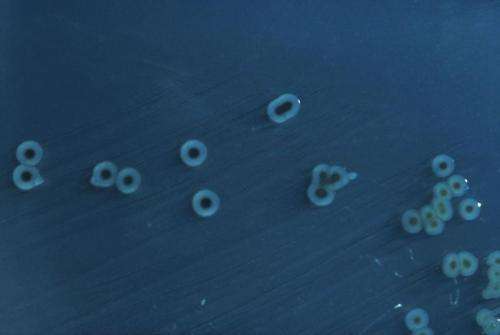Public health concern as superbug breaches Australia's final drug defence

The first evidence of a superbug in a domestic cat that could infect humans and livestock has been discovered in Australia.
The Salmonella strain is resistant to carbapenems, a drug used as the last line of defence in Australian hospitals. Experts believe this resistance may pose a serious threat to public health.
Murdoch University researcher Dr Sam Abraham has led a study to identify the full risk of the Salmonella bug, along with a strong team of medical and veterinary researchers from Concord Hospital, University of Sydney, Concord Vets and University of Adelaide.
"This is the first time that a Salmonella strain with resistance to most antimicrobial drugs has been reported in any Australian domestic animal and it is a significant concern to public health," Dr Abraham said.
"The identification and containment of the bacteria has been an example of Australia's One Health capabilities, where animal and human health specialists work together to prevent the spread of infection."
The bug was discovered serendipitously after a cat admitted to Concord Veterinary Clinic in New South Wales with an upper respiratory infection subsequently developed a gut infection during its treatment.
Clinic veterinarian Dr David Hughes fortunately took the extra precaution of sending the sample to Associate Professor Thomas Gottlieb's research team at Concord Hospital.
"Initial analysis of the Salmonella gave results that had never before been seen for this bacterium in Australia." Prof Thomas Gottlieb said.
"We found that the cat been infected with a Salmonella bacteria carrying the highly resistant IMP-4 gene."
Dr Richard Malik from University of Sydney and Dr Elaine Cheong from Concord Hospital were called in to oversee the containment of the outbreak.
Another eight cats at the veterinary facility were tested, and three animals were also found to be carrying the bacteria.
"One animal had no symptoms, one had been kept in the same room but had not been in direct contact with the sick animal, and one was being kept in a different room in the clinic," Dr Malik said.
"This outbreak was well contained but the positive results from the other cats indicate that the bacterial species may be highly transferrable."
Once identified, the sample was sent to Dr Abraham and Dr Mark O'Dea at Murdoch University, to understand the origin and the characteristics of the superbug.
"This level of antimicrobial resistance in domesticated animals has not been seen before in Australia although it has been recorded in birds within a seagull colony off New South Wales," said Dr Abraham.
"We are not sure how these birds were infected, and we are not ruling out the possibility of such resistant bacteria occurring in the natural environment."
There is also a possibility that the resistance of the bacteria has been built up through exposure to heavy metals. The researchers believe this is also increasing its resistance to common antimicrobial drugs.
"We were able to characterise an entire genetic element within the Salmonella organism known as a plasmid, which was carrying the antibiotic resistance genes; plasmids can be easily transmitted to other bacteria." Dr Mark O'Dea said.
Dr Abraham said that resistant DNA plasmids found in the Salmonella are similar to what have been previously reported from hospitals in the eastern states. However this DNA and associated critical drug resistance have never been seen in a zoonotic pathogen such as Salmonella in Australia before.
Professor Darren Trott, Director, Australian Centre for Antimicrobial Resistance Ecology, University of Adelaide said "This level of resistance is highly unusual in bacteria isolated from animals. In a recent nationwide survey, we found no carbapenem resistance in bacteria from either companion animals or livestock. This cat was definitely very unlucky and had been living a pretty rough life before admission to the facility."
The research paper has been accepted for publication in Scientific Reports.
More information: Sam Abraham et al. Isolation and plasmid characterization of carbapenemase (IMP-4) producing Salmonella enterica Typhimurium from cats, Scientific Reports (2016). DOI: 10.1038/srep35527













